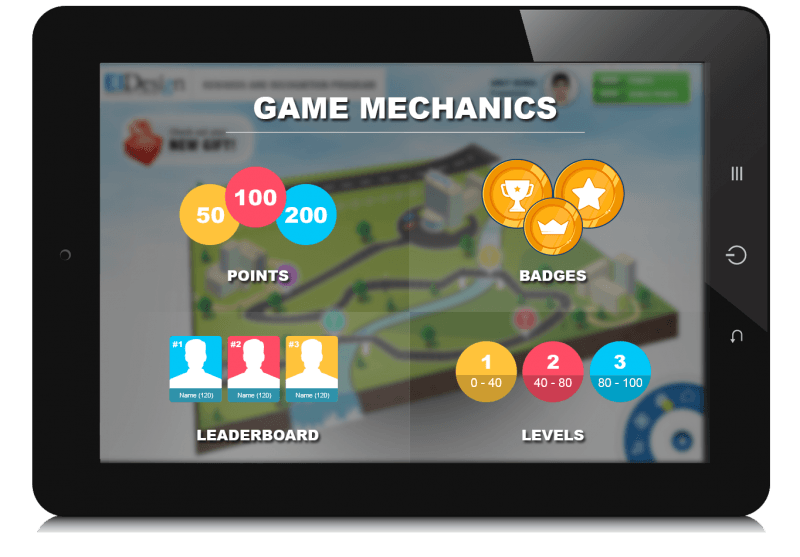Ways In Which Gamification Impacts Corporate Learning
In this article, I will share insights on how gamification is poised to impact corporate learning through the 4 key drivers that are pushing it (hence, why you should evaluate it/adopt it).

Background
Before getting into the specifics of how gamification will impact corporate learning, let’s quickly look at the basics. I begin by using 3 questions from my article on Gamification For Serious Learning - 5 Facts That Will Impress Your Boss to set the context. Then we will look at the crucial fourth question on how exactly gamification will impact corporate learning.
Q1. What Is Gamification?
Gamification is an alternate approach to traditional eLearning to provide engaging, immersive, and effective learning experience to your learners. By using gaming principles, elements, and innovative strategies, learners can be engaged and encouraged to apply this learning at work.
It provides an effective informal learning environment and helps learners practice real-life situations and challenges in a safe environment. Typical components of gamification-based learning courses are shown here.

Q2. What Are The Advantages Of Using Gamification Vis-A-Vis Traditional eLearning?
Unlike traditional eLearning, gamification:
- Evokes friendly competition.
- Brings in a spirit of achievement.
- Enhances user engagement and can be used as a behavior change tool.
- Encourages learners to progress through the content, motivates action, influences behavior and drives innovation.
You can refer to my article Benefits Of Gamification In eLearning for more details.
Q3. How Does Gamification Impact Learning?
There are several aspects of learning notably its retention, and eventual application on the job that can be influenced by gamification.
Specifically:
- Gamification puts scientific principles of repeated retrieval and spaced repetition to good effect and brings about a remarkable change in behavior.
- Games can be “fun” for the learner but still have a significant impact on learning. (The player can experience “fun” during the game and still experience “learning” during gameplay if the level of engagement is high.)
- Playing games with high levels of engagement leads to an increase in retention.
Q4. How Will Gamification Impact Corporate Learning?
I am listing what I believe are the 4 key drivers that indicate how gamification will impact corporate learning.
- The gain for the learners (the learner perspective).
The last 4-5 years have seen dramatic changes in the way learning is delivered. Extensive adoption of mobile learning or mLearning allows learning to be delivered on devices of learners’ choice (including tablets and smartphones). The way learning solutions are being crafted is also undergoing a significant change. The focus is now on crafting more engaging and immersive learning solutions that appeal to the changing learner demographics, which now has a significant percentage of Millennials. Increasingly, modern day solutions use micro learning and feature extensive usage of videos and social learning. Both these factors provide a clear room to provide gamification-based learning that can be deployed on mobile devices in formats that appeals to the learners. It can be crafted in a style that resonates well with the learners leading to higher retention and application. - The gain for business (the business perspective).
While gamification-based learning has always appealed to the learner community, corporates have often been hesitant to embrace this on a wider scale. Not anymore! There are several case studies that establish gamification (for serious learning) creates:- High impact training.
- Effective application on the job.
- Maturing of tools and technologies to support gamification-based solutions.
This is a very significant driver and today it is much easier to craft effective gamification solutions on account of:- Maturing of mLearning or mobile learning authoring tools (particularly responsive).
- Availability of varied gamification platforms to choose from.
- Learning Management System support for gamification.
- Capability to create high impact learning solutions.
With gamification, the learner engagement quotient is significantly high. It allows organizations to challenge the learners, get them to give their very best as there are rewards for the taking, bring in a sense of variety, and use the community factor and healthy competition among learner groups to good effect. Higher motivation levels and a responsive learning environment will help learners make their own contributions to the organization’s knowledge base. A well-crafted gamification solution designed with the learner preferences in mind will certainly result in higher learner engagement and knowledge retention. This in turn leads to enhanced performance, better application of learning, and fulfillment of the expectations that an organization has with its workforce and the learning initiative.
Specifically, gamification can:
- Support all training needs (ranging from Induction, onboarding, behavioral change, soft skills and compliance).
- Enrich traditional eLearning-based training (through partial gamification).
- Enrich ILT trainings (through gamified assessments).
- Leverage on learning paths (with wide and varied range of learning assets).
- Leverage on collaboration (social learning).
I hope this article was useful in understanding how gamification will impact corporate learning and trigger an evaluation or adoption of gamification for your learning needs. Do reach out to me if you have any queries.
Read more:
- Go Beyond Badges And Leaderboards: 5 Examples Of Gamification In Corporate Training
- Why Adopt Gamification For Corporate Training – 8 Questions Answered
- Free eBook - Why You Should Adopt Gamification For Corporate Training
- Gamification For Serious Learning – 5 Facts That Will Impress Your Boss









